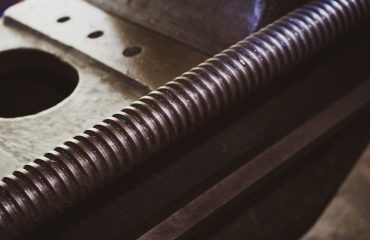Choosing between concrete and steel for a construction project is a critical decision impacting cost, durability, sustainability, and aesthetic appeal. Both materials are incredibly strong and versatile, but their properties differ significantly, making them suitable for different applications. This in-depth comparison will help you understand the nuances of each material and make an informed choice.
Strength and Durability: A Tale of Two Titans
Concrete’s compressive strength is legendary. It excels at resisting crushing forces, making it ideal for foundations, columns, and walls. However, its tensile strength (resistance to pulling forces) is considerably lower. Steel, on the other hand, boasts exceptional tensile strength, making it perfect for beams, girders, and tension members. While steel can also withstand compressive forces, it’s its ability to withstand tension that truly sets it apart. The combination of concrete’s compressive strength and steel’s tensile strength is often exploited in reinforced concrete structures, where steel rebar provides tensile reinforcement within the concrete matrix.
Cost Analysis: Balancing Budget and Performance
The cost of concrete and steel varies depending on location, availability, and market fluctuations. Generally, concrete is often less expensive than steel on a per-unit-volume basis. However, the overall cost of a project depends on many factors beyond material cost alone. The complexity of forming and pouring concrete, along with potential labor costs, can significantly impact the final price. Steel fabrication and erection can also be expensive, especially for complex structures. Furthermore, transportation costs for both materials can vary greatly depending on distance and accessibility.
Consideration should also be given to the long-term costs. Steel may require more frequent maintenance to prevent corrosion, while concrete can suffer from cracking or degradation over time, particularly in harsh environments. The lifecycle cost analysis, taking into account initial investment, maintenance, and lifespan, is crucial in making a financially sound decision.
Environmental Impact: A Green Construction Perspective
Both concrete and steel have significant environmental footprints. Concrete production is a major consumer of energy and contributes significantly to carbon dioxide emissions. The cement manufacturing process, specifically the calcination of limestone, is a large source of these emissions. Steel production, while also energy-intensive, has seen advancements in reducing its carbon footprint through the use of recycled steel and improved production processes. However, both materials require significant transportation, adding to their overall environmental impact.
Sustainable alternatives and practices are constantly being explored. The use of recycled aggregates in concrete, low-carbon cement, and improved steel recycling infrastructure are steps towards minimizing the environmental impact of these construction materials.
Design Flexibility and Aesthetics: Shaping the Built Environment
Steel’s flexibility allows for the creation of intricate and lightweight structures with long spans. This makes it particularly suitable for modern architectural designs, bridges, and high-rise buildings. Concrete, while less flexible in terms of shaping, offers significant design versatility. It can be cast into almost any shape, allowing for unique architectural forms and intricate detailing. Advances in concrete technology, including high-performance concrete and self-consolidating concrete, have further expanded its design possibilities.
Aesthetically, both materials can be used to create visually stunning structures. Steel’s sleek lines and strength can be showcased in exposed structural elements, while concrete’s texture and color can be manipulated to create a variety of finishes and architectural expressions.
Maintenance and Lifespan: Long-Term Considerations
The lifespan of both concrete and steel structures can be extensive, but proper maintenance is crucial. Steel is susceptible to corrosion, requiring regular inspections and protective coatings to prevent rust and deterioration. Concrete can crack due to shrinkage, temperature changes, or overloading, potentially requiring repairs or strengthening. Regular maintenance, including crack sealing, waterproofing, and surface treatments, can significantly extend the lifespan of concrete structures.
The choice between concrete and steel often involves a trade-off between initial cost, maintenance requirements, and expected lifespan. A thorough assessment of the project’s specific requirements and environmental conditions is essential in determining the most appropriate material choice.
Ultimately, the choice between concrete and steel depends on a variety of factors, including the specific project requirements, budget, environmental considerations, and aesthetic preferences. A careful analysis of each material’s strengths and weaknesses is crucial in making an informed decision that leads to a successful and sustainable construction project.
Tags: Concrete, Steel, Construction Materials, Building Materials, Structural Engineering




